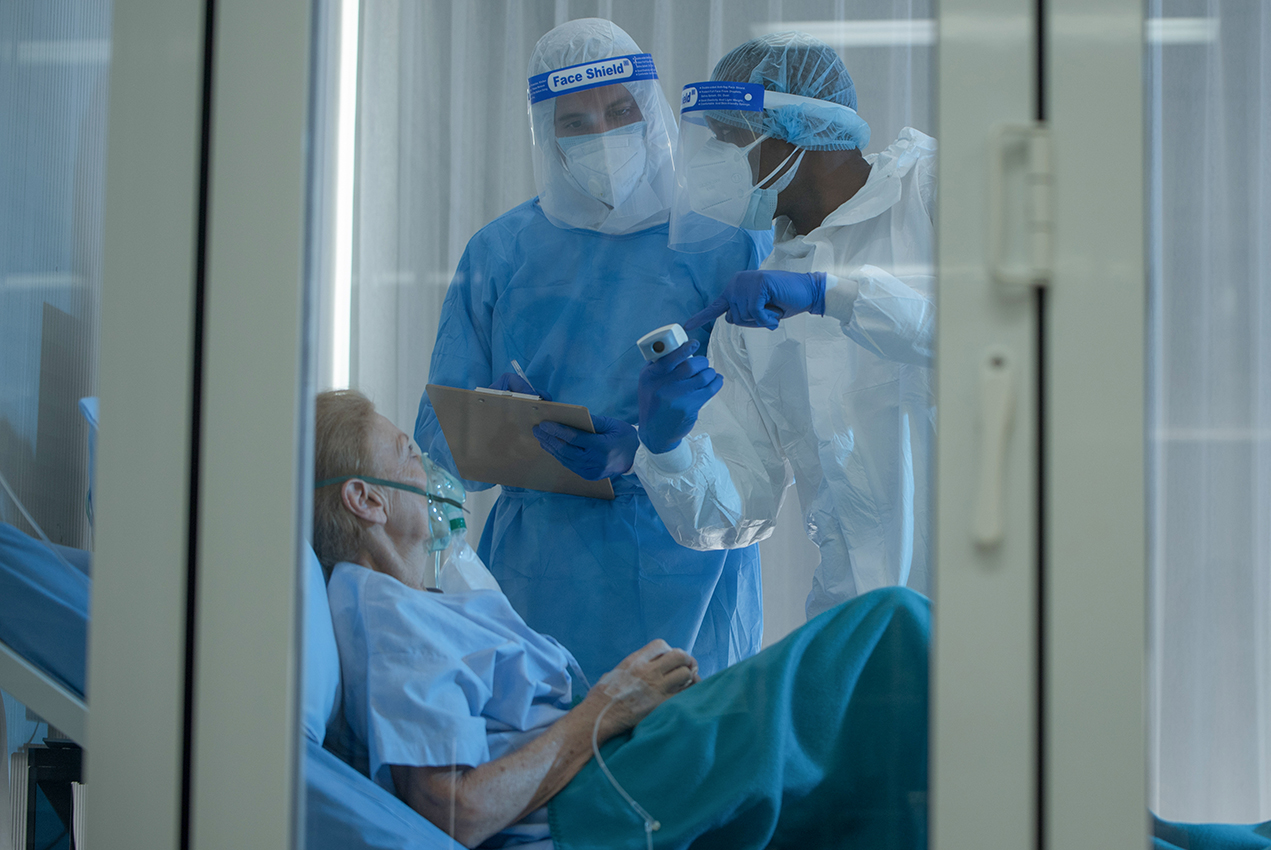Infectious disease experts have long known that the best the way to keep a deadly virus from spreading across hospital wards is to confine contagious patients to negative-pressure rooms.
Now researchers at the USC Tina and Rick Caruso Department of Otolaryngology – Head and Neck Surgery are taking that idea to the next level, developing a procedure face mask that lets them safely scope their patients during the COVID-19 pandemic.
The mask goes on the patient, not the provider.
Negative air pressure inside the mask prevents viral contamination of the clinic space. Built-in sensors and air-flow balance control allow the use of supplementary oxygen, meaning even very sick patients can undergo endoscopy.
The idea grew out of necessity.
“We needed to reopen our clinic safely,” said Elisabeth Ference, MD, an assistant professor of clinical otolaryngology at the Keck School of Medicine of USC. Early in the pandemic, reports from China showed ENTs and ophthalmologists were among the most likely clinicians to contract COVID-19.
Clinicians aren’t the only ones at risk. A recent study showed that nasal endoscopy — and the sneezing associated with it — generates particles in the 1-10 micrometer range.
“Viral particles could infect the next patient in the room, or other workers, such as the cleaning crew,” Ference said.
To mitigate these hazards, USC Caruso Department of Otolaryngology – Head and Neck Surgery locations cut patient volume by two-thirds. Exam rooms had to be “terminally cleaned” between patients — a process that takes up to four hours.
Ference turned to her department chair, John Oghalai, MD, proposing the initial concept of a negative-pressure mask. She knew of colleagues in other hospitals whose improved “hacks” involved punching a hole in an N95 mask and inserting the scope through a seal made from rubber gloves. Other ENTs modified a bag valve mask, a type of manual resuscitator, by removing the top and inserting a filter.
“But there was nothing tested or off-the-shelf,” she said.
Oghalai brought in Brian Applegate, PhD, a biomedical engineer who holds joint faculty appointments in the USC Viterbi School of Engineering and the Keck School.
“It was a fairly straightforward engineering problem,” said Applegate, who had previously 3-D printed reusable N95 masks for every USC Caruso Department of Otolaryngology – Head and Neck Surgery clinician. “Now we’re trying to figure out how to get the mask to contain the aerosol, be comfortable, and be easy to use. Also, how do we verify that it fits sufficiently well to protect people with different face shapes or with beards?”
Applegate and staff scientist Wihan Kim are currently prototyping the procedure mask.
The project received a $105,000 boost from the W. M. Keck Foundation, part of a $4 million emergency fund announced in April to speed COVID-19 research at USC. Under the nine-month grant, the research team plans to finalize the prototype and also to quantify the risk of aerosolization of patient secretions during routine nasal endoscopy and laryngoscopy.
Once the pandemic recedes, the researchers believe demand for the procedure mask will continue.
“I don’t think ENT is ever going back to the way it was before,” Ference said. “We were way too cavalier about personal protective equipment.”
Otolaryngologists previously used only gloves during aerosol generating procedures. Increased awareness of viral contamination, Ference believes, will lead to more robust safety regimens going forward, preventing the spread of flu and other common respiratory diseases.
But the procedure mask has potential applications well beyond scoping. It promises to ease the difficulty of moving infectious patients around hospitals.
Currently, COVID-positive patients who are not intubated or on oxygen supplementation wear ordinary surgical masks if they must leave isolation for imaging or surgery.
“There’s nothing that we have that would seal them in, other than the actual structure of the COVID ward,” Ference said. Negative-pressure wards have their own elevators, and certain ORs are designated for COVID-positive patients. But when a COVID-positive patient needs an MRI, that triggers an intense cleaning procedure which shuts down the machine for two hours.
“And that’s an MRI machine the rest of the hospital needs,” she said.
The procedure mask will remove that stumbling block, among many others.
— Diane Krieger


